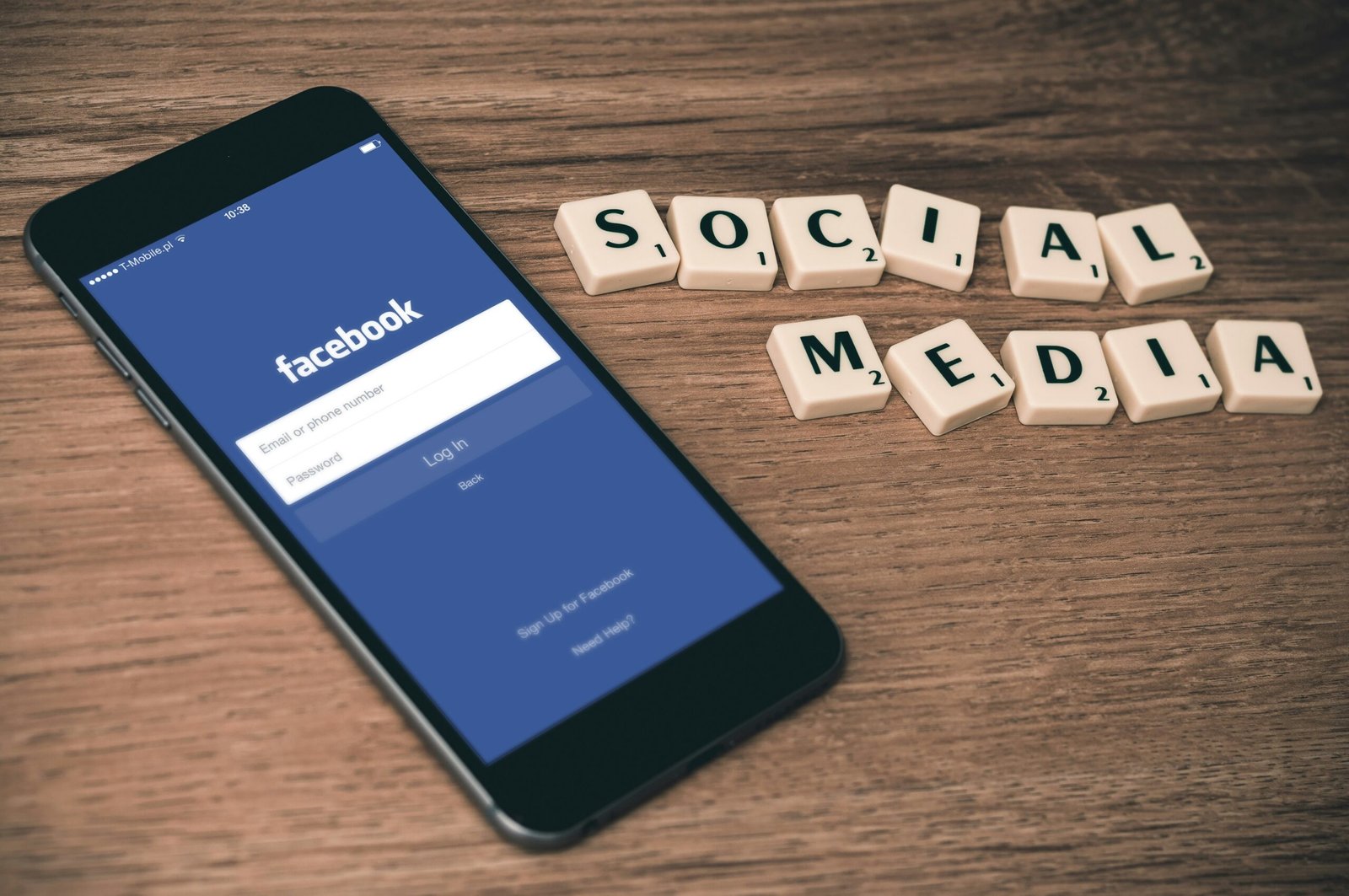Importance of Influencer Marketing
Growing Significance in Digital Strategies
Influencer marketing has become an essential component of digital strategies for tech startups and SaaS companies. The collaboration between influencers and brands aims to promote products or services through digital channels, enhancing brand recognition, driving website traffic, and increasing sales. As tech companies seek to grow market share and attract enterprise clients, embracing influencer partnerships is crucial for reaching target audiences effectively.
Currently, 81% of US-based social marketers consider influencer marketing a vital part of their social media strategy, aiming not for accidental virality but for specific goals and ROI with their partnerships (Sprout Social). This strategic approach highlights the importance of engaging with influencers who align with brand values and can genuinely connect with potential customers.
Statistics on Industry Growth
The growth of the influencer marketing industry is substantial. It is projected to reach a remarkable $24 billion by 2024. This surge signifies that businesses, especially in the technology sector, are recognizing the value influencers add to customer engagement and brand credibility.
The willingness to invest more in influencer marketing is evident, with 60% of marketers planning to increase their budgets for influencer partnerships in 2024 (Sprout Social). Such statistics emphasize the potential for tech brands to leverage influencer marketing effectively in their overall technology marketing strategies.
| Key Statistic | Percentage/Value |
|---|---|
| Influencer marketing industry growth expected by 2024 | $24 billion |
| Marketers increasing influencer marketing budgets | 60% |
| Social marketers view influencer marketing as essential | 81% |
Understanding these trends allows tech companies to structure their digital marketing efforts toward influencer collaborations that foster growth and improve brand positioning in an increasingly competitive market. By integrating influencer marketing into their digital marketing for tech companies strategies, brands can harness the potential of social media to create meaningful connections and drive business results.
Utilizing Nano Influencers
In the realm of tech influencer marketing, the trend of partnering with nano influencers is gaining significant traction. Tech startups and companies are increasingly recognizing the unique advantages that these influencers offer for reaching niche audiences effectively.
Increasing Trend in Partnering
A recent study indicates that 44% of brands prefer to collaborate with nano influencers in 2024, up from 39% in the previous year. Nano influencers typically have smaller followings, ranging from 1,000 to 10,000 followers. This smaller audience often results in high engagement rates, making their endorsements more credible and impactful.
| Year | Preference for Nano Influencers (%) |
|---|---|
| 2023 | 39 |
| 2024 | 44 |
The increase in preference reflects a growing recognition that nano influencers can generate authentic connections with their audience. Their followers often view them as relatable and trustworthy, leading to increased interest in the products they endorse.
Benefits for Tech Brands
Tech brands stand to benefit significantly from partnering with nano influencers. Unlike larger influencers, nano influencers usually have more engaged and loyal audiences. The authentic nature of their interactions can enhance brand perception and improve conversion rates.
Several advantages of utilizing nano influencers for tech brands include:
Cost-Effectiveness: Collaborating with nano influencers is often more budget-friendly compared to partnering with macro or mega influencers. This enables tech companies to allocate resources to multiple campaigns.
Niche Targeting: Nano influencers often serve specific interests or industries. By partnering with these influencers, tech brands can more effectively reach their ideal customers.
Higher Engagement Rates: As evidenced by recent trends, the engagement rates for nano influencers often exceed those of larger influencers, leading to more meaningful interactions and discussions about the brand.
Companies are leveraging strategies such as giveaways, product collaborations, and influencer-led advertisements to maximize the impact of these partnerships. According to recent data, 65% of marketers engage in influencer marketing through giveaways, while 62% utilize product collaborations.
Understanding these dynamics allows tech startups and SaaS companies to harness the full potential of influencer marketing in driving brand growth and attracting enterprise clients. For more insights on marketing strategies specific to technology organizations, consult our resources on b2b technology marketing and technology marketing strategies.
Impact on Consumer Behavior
The effects of tech influencer marketing on consumer behavior are profound and can significantly influence purchasing decisions and the frequency of purchases made.
Influence on Purchasing Decisions
Influencer marketing operates as a form of earned media, leveraging public exposure through social media mentions, customer reviews, and word-of-mouth recommendations. According to Nielsen’s Trust in Advertising survey, 77% of consumers are more inclined to make a purchase if a friend or a trusted influencer recommends it. This highlights the critical role that influencers play in shaping consumer decisions, as their endorsements often translate into higher levels of trust compared to traditional advertising.
Influencers create a connection with their audiences, presenting products in contexts that resonate with their followers’ lifestyles. This personalization often leads to increased likelihood of purchase. A study indicates that nearly half of all consumers (49%) make purchases at least once a month as a result of seeing influencer posts, while 86% report that they have purchased inspired by an influencer at least once a year (Sprout Social).
| Consumer Influence | Percentage |
|---|---|
| Make purchases at least once a month due to influencer posts | 49% |
| Made a purchase inspired by an influencer at least once a year | 86% |
Frequency of Purchase due to Influencers
The frequency of consumer purchases is notable in the context of influencer marketing. As engagement with influencers becomes more frequent, so does the likelihood of purchase. The COVID-19 pandemic catalyzed a significant surge in influencer marketing, with a 470% increase from 2016 to 2020. During this time, many consumers, particularly Gen Z and baby boomers, expressed that content creators provided a sense of community and connection which influenced their purchasing behavior (BigCommerce).
The variations in purchase frequency highlight the impact of influencer campaigns on elevating brand visibility and driving sales. Influencer marketing campaigns can utilize various approaches including sponsored content, affiliate links, and contests, effectively contributing to enhanced consumer engagement and driving sales growth (BigCommerce).
In conclusion, tapping into the power of influencer marketing can reshape consumer behavior, enhancing purchasing decisions and increasing purchase frequency. Marketing directors and tech startups looking to grow their market share can leverage these insights to bolster their technology marketing strategies effectively.
Budget Allocation Trends
Increase in Marketing Investment
The landscape of marketing is evolving rapidly, with companies increasingly recognizing the value of influencer marketing. Reports indicate that the influencer marketing industry is projected to reach a staggering $24 billion by 2024. As this sector grows, so does the financial commitment from brands. Currently, the influencer marketing industry is valued at approximately $21.1 billion in 2023. Significantly, 60% of marketers are planning to ramp up their influencer marketing budgets throughout 2024.
An emerging trend shows that 17% of companies are allocating over half of their marketing budgets toward influencers. This shift underscores the belief that influencers can yield results comparable to, if not better than, traditional marketing channels. A notable 89% of marketers agree that influencers are at least as effective as other marketing methods (Meltwater).
| Year | Influencer Marketing Industry Value (in Billions) |
|---|---|
| 2023 | 21.1 |
| 2024 (Projected) | 24 |
Shift towards Influencer Partnerships
An overarching trend within tech influencer marketing is the growing partnership between brands and influencers. Brands are not just looking to leverage influencers as a one-time promotional tool but are increasingly integrating influencer collaborations into their long-term marketing strategies. The prevalence of influencer marketing has nearly doubled since 2019, indicating that more companies are embracing it as a staple in their advertising efforts.
Companies are diversifying their approach to working with influencers, employing various methods such as affiliate partnerships, product gifting, sponsored content, guest blogging, and brand ambassadorships (Fast Company). This strategic shift not only enhances brand visibility but also helps businesses foster a deeper connection with their target audiences.
As tech startups, SaaS companies, CIOs, and marketing directors consider the right allocation of their marketing budgets, understanding these trends becomes essential. For more insights on effective approaches in this domain, explore our resources on B2B technology marketing and technology marketing case studies.
Measuring Influencer Campaign Success
For tech startups and SaaS companies engaging in tech influencer marketing, understanding how to measure the success of their influencer campaigns is essential. Evaluating both engagement metrics and brand awareness provides insights into the effectiveness of these collaborations.
Tracking Engagement Metrics
Tracking engagement metrics is crucial for assessing the performance of influencer campaigns. It enables brands to evaluate how their audience interacts with the content shared by influencers. According to the Q3 2023 Pulse Survey, 41% of marketers measure the growth in followers/subscribers on social platforms to gauge the success of their campaigns.
| Engagement Metric | Percentage of Marketers Using This Metric |
|---|---|
| Growth in Followers/Subscribers | 41% |
| Tracking Link Traffic | 50% |
| Website Traffic Increase | 45% |
A growing audience often signifies increased interest and awareness around the brand. Additionally, 50% of marketers track link traffic from social media posts or use promotion codes to assess campaign effectiveness. Furthermore, 45% analyze increases in website traffic as an additional metric to ensure influencer content drives significant engagement.
Evaluating Brand Awareness
Evaluating brand awareness is another integral component of measuring influencer marketing success. The Q3 2023 Pulse Survey found that a large majority of social marketers believe influencer marketing significantly impacts their brand’s reputation (87%) and customer loyalty (87%). This indicates that tracking brand sentiment and recognition can be just as important as engagement metrics.
To measure brand awareness effectively, companies might consider implementing specific strategies, such as brand ambassador programs, where influencers commit to representing the brand while improving ongoing engagement. This approach fosters a more authentic connection, often resulting in a genuine increase in brand visibility and follower interactions.
By focusing on both engagement metrics and brand awareness, tech companies can gain a comprehensive view of their influencer marketing campaign performance, enabling them to refine their strategies and enhance their marketing efforts. For further insights on effective marketing approaches, explore our articles on b2b technology marketing and digital marketing for tech companies.
Collaboration Strategies
Effective collaboration with influencers requires careful planning and strategic selection. This section highlights the key aspects of choosing the right influencers and ensuring brand alignment in tech influencer marketing.
Choosing the Right Influencers
Selecting the appropriate influencers can greatly impact the success of a marketing campaign. Brands should focus on influencers who resonate with their target audience and reflect their brand values. The best influencer for a brand is not always the one with the largest following, but rather one with an engaged audience relevant to the target market (Fast Company).
When vetting influencers, brands must confirm their credibility. This includes checking for authentic engagement and ensuring that they have not purchased fake followers, views, or likes. Here are key questions to consider:
| Consideration | Description |
|---|---|
| Audience Demographics | Does the influencer’s audience align with your target market? |
| Engagement Rate | How actively does the influencer’s audience interact with their content? |
| Content Quality | Is the influencer’s content reflective of your brand’s image? |
| Authenticity | Does the influencer maintain a genuine connection with their audience? |
The objective is to establish trustworthy relationships that enhance the brand’s credibility in the tech space.
Ensuring Brand Alignment
Authenticity is crucial for successful influencer partnerships. Influencers must genuinely resonate with the brand’s values to build trust among their audiences. Brands should look for influencers whose content, messaging, and style complement their own brand image and story.
Brands can collaborate with influencers through methods such as affiliate partnerships, product gifting, sponsored content, guest blogging, and brand ambassadorships. This variety allows for flexibility in how brands engage with their selected influencers.
To ensure brand alignment, consider the following:
| Strategy | Description |
|---|---|
| Content Review | Analyze past content produced by the influencer for alignment with brand messaging. |
| Collaborative Planning | Work together with the influencer to create content that reflects both the influencer’s style and the brand’s goals. |
| Continual Engagement | Maintain long-term relationships for ongoing alignment and authenticity in messaging. |
By strategically choosing influencers and ensuring alignment with brand values, tech startups and companies can leverage the power of influencer marketing to enhance visibility and trust in the marketplace. Brands should also explore technology marketing strategies that integrate influencer partnerships for optimal growth.
Influencer Marketing Metrics
Measuring the success of tech influencer marketing campaigns is crucial for ensuring that efforts align with business objectives. Two significant metrics to focus on are social media engagement and follower/subscriber growth.
Social Media Engagement
Social media engagement is a primary metric for evaluating the effectiveness of influencer marketing campaigns. Engagement metrics include likes, shares, comments, and user-generated content. According to a study, 68% of marketers track these engagement metrics to assess the impact of their campaigns (Sprout Social). High engagement often indicates that the audience finds the content valuable, which can lead to increased brand recognition.
Social Media Engagement Metrics Breakdown
| Engagement Type | Percentage of Marketers Tracking |
|---|---|
| Likes | 68% |
| Shares | 68% |
| Comments | 68% |
| User-Generated Content | 19% |
Follower/Subscriber Growth
Another vital metric is the growth in followers or subscribers on social media platforms. A reported 41% of marketers measure this growth to evaluate the success of influencer initiatives. An increase in followers signifies growing interest and awareness around the brand. This metric serves as a strong indicator of how well the influencer content resonates with the audience.
Follower/Subscriber Growth Metrics
| Metric Type | Percentage of Marketers Measuring |
|---|---|
| Growth in Followers/Subscribers | 41% |
Tracking these metrics allows tech startups, SaaS companies, and marketing directors to refine their influencer strategies while effectively targeting their audience. For further understanding of how to leverage these tactics in digital marketing, explore our articles on b2b technology marketing and technology marketing strategies.
Effective Campaign Types
Tech influencer marketing campaigns can take various forms, each designed to leverage the influence of the creator’s audience. This section explores two effective approaches: giveaways and product collaborations, and sponsored posts and affiliate marketing.
Giveaways and Product Collaborations
Giveaways are a powerful tool in influencer marketing strategies, often used to boost engagement and promote a brand. In these campaigns, influencers create posts detailing how their audience can enter the contest, typically by performing actions such as leaving a comment or sharing the post. This method is particularly effective for micro-influencers, who boast highly engaged audiences.
| Giveaway Type | Actions to Enter | Audience Benefit |
|---|---|---|
| Social Media | Comment, share, or follow | Engage with the brand |
| Email Subscription | Sign up for newsletters | Receive updates and promotions |
| Product Review | Post about the product experience | Attract attention to the product |
In addition, product collaborations often accompany giveaways, allowing influencers to distribute free items from a brand to their followers. These posts commonly utilize hashtags like #giveaway and include specifics on how to participate. Implementing a giveaway can significantly increase brand visibility and build a community around the tech product.
Sponsored Post and Affiliate Marketing
Sponsored posts are another common form of tech influencer marketing where brands pay influencers to create content promoting their products. These posts are disclosed typically using a hashtag such as #ad or #sponsored, making the partnership transparent to the audience.
| Sponsored Post Type | Description | Potential Benefit |
|---|---|---|
| Fixed Fee | Influencers receive a set payment for each post | Clear budget expectations |
| Performance-based Commission | Influencers earn commissions through codes or affiliate links | Motivates influencers to perform better |
By choosing either a fixed fee or performance-based commission model, brands can tailor their investment strategy to suit their marketing goals. Sponsored collaborations can create authentic content that resonates with the audience, demonstrating the product in a relatable context (Modash). Additionally, incorporating affiliate marketing elements into the strategy can amplify the potential for increased sales, aligning the goals of both the influencer and the brand.
Both giveaways and sponsored posts play a pivotal role in tech influencer marketing, providing opportunities for brands to engage with target audiences effectively while maximizing visibility and promoting growth. For further insights on strategic marketing approaches, explore our articles on digital marketing for tech companies and technology marketing strategies.





















